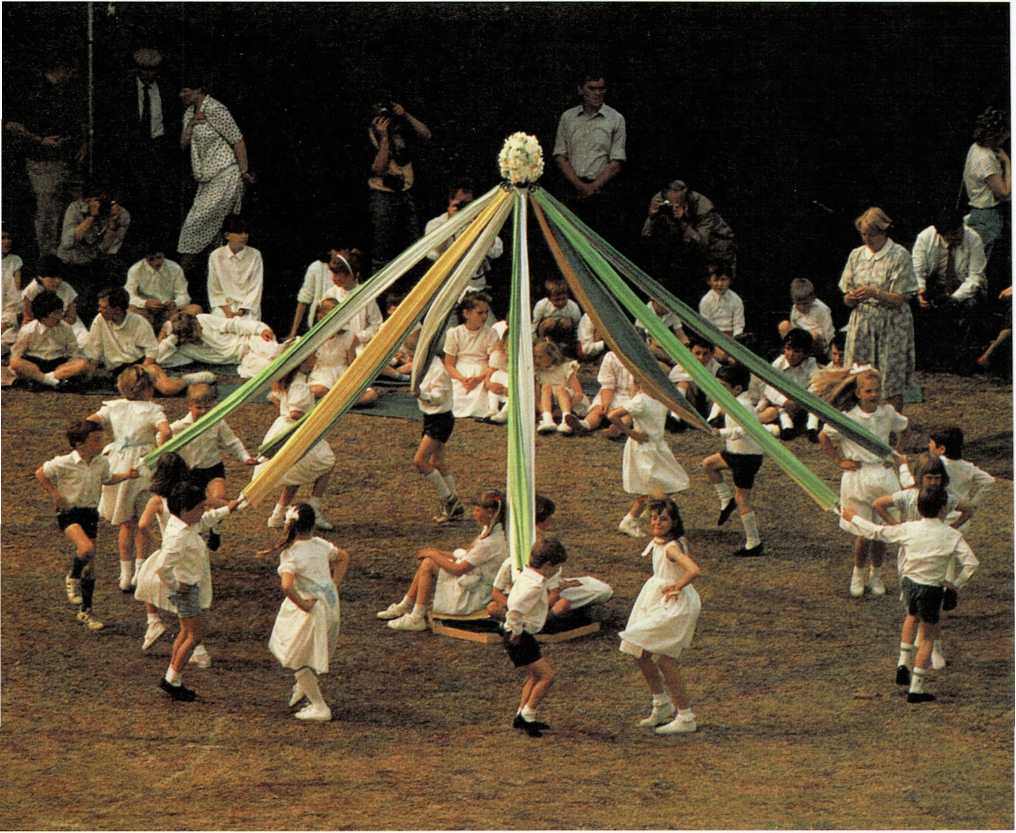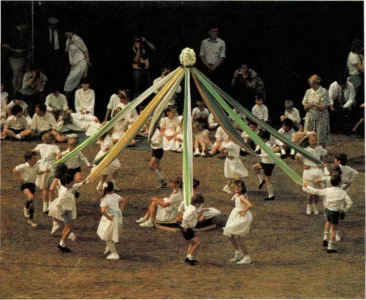May Day and Labor Day
May 1
Maypoles and parades
In many countries, the first of May is May Day—a day to welcome
spring. People gather flowers and dance, often around a May pole.
May Day came to the United States from England—but it was brought to
England by the ancient Romans. In Rome, there was a day in spring when
the young men paraded through the city, carrying a pine tree. There was
also a festival to honor Flora, the Roman goddess of flowers. When the
Romans conquered England, the pine tree became a Maypole.
On May Day in England, the pole was set up on the village green and
decorated with flowers and ribbons. A May Queen was picked and crowned
with flowers. Villagers danced around the May pole, holding the ends of
ribbons that hung from the pole. As they danced, they wove the ribbons
in and out.
In time, some people thought the merrymakers worshiped the Maypole. For
a while, the Maypole was forbidden by law. But it reappeared later. To
this day, children in parts of England and elsewhere still sing and
dance around the Maypole on May Day.
In some countries, the first of May is Labor Day, a holiday in honor of
working people. And in some Communist countries, it is a day

Children in England dance around a Maypole on May Day.
to honor the nation. People listen to speeches and watch parades of
weapons and soldiers that show the country’s strength.
In Russia and some other countries, Communist governments have changed
to other kinds of governments. May Day has changed, too. There are
parades and speeches, but there are also parties with singers, dancers,
and acrobats in honor of May.

